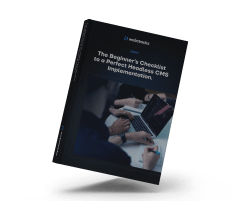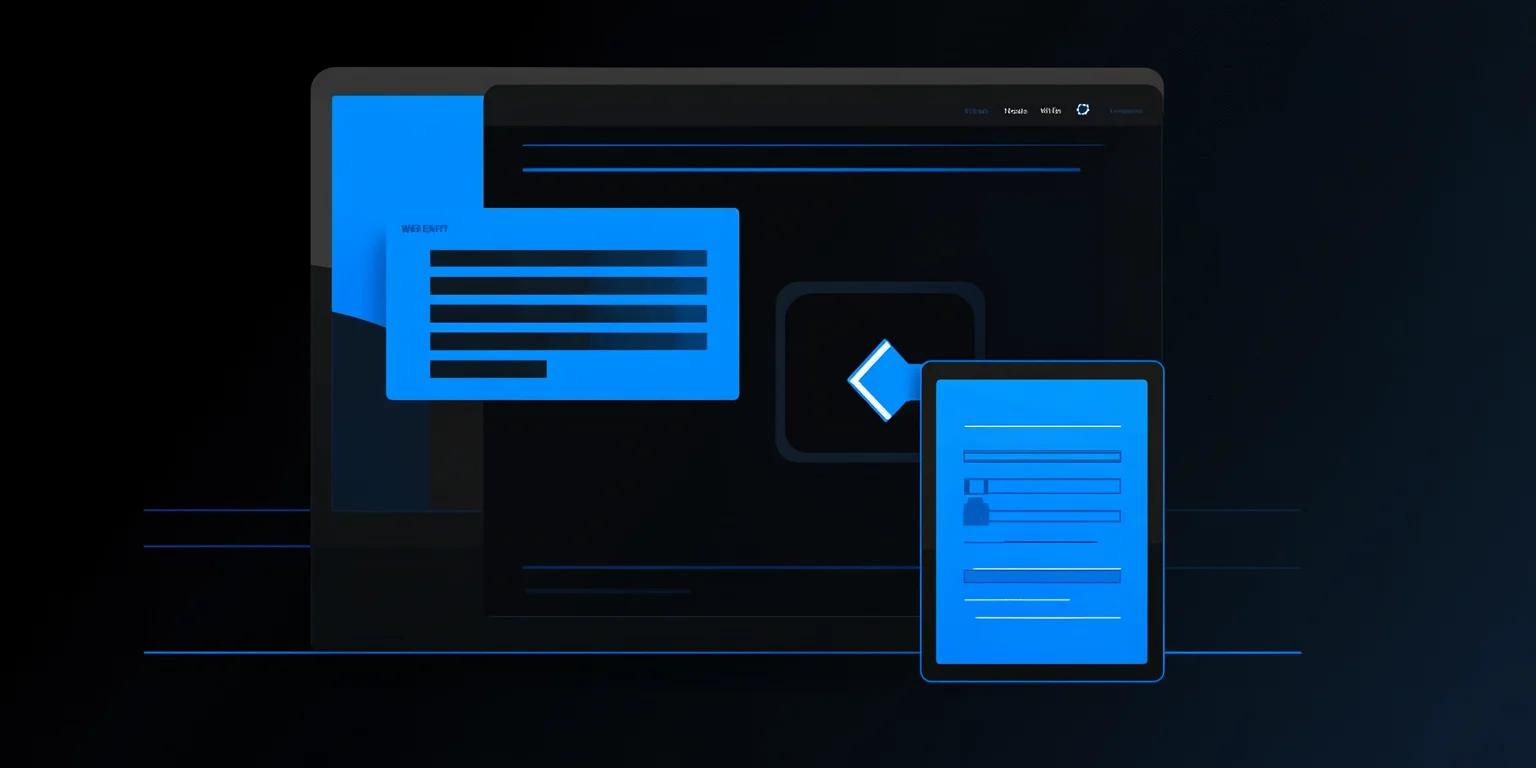You’ve probably heard about Core Web Vitals by now. They’re a set of metrics Google uses to evaluate the user experience of your website. Understanding how these metrics are measured can help you improve your site’s performance and search rankings.
Whether you’re a developer or a site owner, knowing the difference between field data and lab data is key. Let’s break down how Core Web Vitals are measured and the tools you can use to track them.
How Are Core Web Vitals Measured?
Grasping the nuances of how these metrics are measured can be a game-changer for your site's performance. Let's dive in.
What’s the Difference Between Field Data and Lab Data?
Field data comes from real users interacting with your site. This data reflects actual user experiences and is collected from browsers like Chrome. Lab data, on the other hand, is gathered in a controlled environment. It uses predefined conditions to simulate user interactions.
Google relies on field data for search rankings. This means your real-world performance directly impacts your search visibility. Lab data is useful for diagnosing issues and testing changes before they go live.
What Tools Can You Use to Measure Core Web Vitals?
- PageSpeed Insights: This tool provides both field and lab data. It offers a comprehensive overview of your site’s performance and suggests improvements.
- Chrome User Experience Report: This dataset collects field data from real users. It’s valuable for understanding how your site performs in the wild.
- Chrome DevTools Performance Tab: Use this for a detailed breakdown of your site’s performance. It helps identify bottlenecks and optimize loading times.
- Google Search Console: This tool offers reports on Core Web Vitals for your entire site. It’s great for tracking performance trends and identifying problematic pages.
- Real User Monitoring (RUM) tools: These tools collect data from actual users in real-time. They provide insights into how users experience your site across different devices and conditions.
- Core Web Vitals Chrome extension: This extension gives you quick access to Core Web Vitals metrics as you browse your site. It’s handy for on-the-fly checks and immediate feedback.

What is Largest Contentful Paint (LCP)?
Understanding LCP is crucial as it measures the loading performance of the largest content element visible within the viewport. This element could be an image, video, or a large block of text. LCP is a key metric for understanding how quickly the main content of a page loads, impacting user experience directly. A good LCP score is under 2.5 seconds, meaning the largest content element should load within this timeframe to ensure a smooth user experience.
How Can You Improve LCP?
Improving LCP involves several strategies focused on optimizing the loading speed of the largest content element. Here are some effective methods:
- Upgrade Hosting: A faster server response time can significantly reduce LCP. Consider upgrading to a hosting plan that offers better performance. Dedicated servers or high-quality shared hosting plans can provide the speed needed to improve LCP scores.
- Implement Critical CSS: Critical CSS refers to the CSS required to render above-the-fold content. By inlining this CSS directly in the HTML, you can reduce the time it takes for the browser to start rendering the page. This approach minimizes render-blocking resources, allowing the largest content element to load faster.
- Optimize Images: Large images can slow down your page load times. Compress images to reduce their file size without sacrificing quality. Use modern image formats like WebP, which offer better compression rates. Additionally, ensure images are appropriately sized for different devices to avoid unnecessary loading times.
- Preload Hero Images: Hero images are often the largest content elements on a page. Preloading these images can help them load faster. Use the link rel="preload" attribute in your HTML to instruct the browser to load these images early. This ensures that the hero image is available as soon as the page starts rendering, improving LCP.
Improving LCP requires a combination of server optimizations and front-end performance enhancements. By focusing on these areas, you can ensure that the largest content element on your page loads quickly, providing a better user experience.

What is Interaction to Next Paint (INP)?
INP measures how quickly your page responds to user interactions. This includes actions like clicking buttons, tapping on touchscreens, or pressing keys. A good INP score is under 200 milliseconds, ensuring a smooth and responsive user experience. In 2024, INP replaced First Input Delay (FID) as the primary metric for assessing page responsiveness.
What Can You Do to Improve INP?
Improving INP involves several strategies to ensure your page remains responsive to user interactions. Here are some effective methods:
- Avoid Recurring Timers That Overwork the Main Thread: Recurring timers, such as setInterval or setTimeout, can bog down the main thread if they execute too frequently. Limit their use or ensure they perform minimal work. This prevents the main thread from becoming overloaded, allowing it to respond to user interactions more quickly.
- Break Up Long Tasks: Long-running tasks can block the main thread, delaying user interactions. Break these tasks into smaller, asynchronous chunks. Use techniques like requestIdleCallback or setTimeout to defer non-urgent work. This keeps the main thread free to handle user inputs promptly.
- Avoid Interaction Overlap: Multiple interactions occurring simultaneously can overwhelm the main thread. Implement debouncing or throttling techniques to manage the frequency of event handlers. This ensures that each user interaction is processed efficiently without causing delays.
- Optimize Event Callbacks: Event callbacks should be optimized to execute quickly. Avoid complex logic or heavy computations within these callbacks. Instead, offload intensive tasks to web workers or background threads. This keeps the main thread responsive and reduces the time taken to process user interactions.
- Defer Non-Rendering Work: Non-rendering tasks, such as data fetching or analytics processing, can delay user interactions if executed on the main thread. Defer these tasks to background threads or use asynchronous APIs. This ensures that the main thread remains available for rendering and responding to user inputs.
Improving INP requires a combination of efficient coding practices and strategic task management. By focusing on these areas, you can ensure that your page remains responsive and provides a better user experience.
What is Cumulative Layout Shift (CLS)?
CLS measures the visual stability of a page as it loads. It tracks how much elements on the page unexpectedly move around, affecting the user experience. A good CLS score is under 0.1, meaning the page remains stable and elements do not shift unexpectedly.
How Can You Improve CLS?
Improving your CLS score involves several strategies to ensure that your page remains visually stable as it loads. Here are some effective methods:
- Include Size Attributes on Images and Videos: Always specify the width and height attributes for images and videos. This helps the browser allocate the correct amount of space while the media loads, preventing unexpected shifts. For responsive designs, use CSS to adjust the dimensions for different screen sizes.
- Avoid Inserting Content Above Existing Content: Adding new content above existing content can cause the page to shift, leading to a poor CLS score. Ensure that any dynamic content, such as ads or banners, loads in reserved spaces. This way, the layout remains stable and users do not experience sudden shifts.
- Use CSS Aspect Ratio Boxes: For elements that do not have fixed dimensions, use CSS aspect ratio boxes. This technique involves creating a container with a fixed aspect ratio, ensuring that the space is reserved even before the content loads. This approach is particularly useful for responsive images and videos, maintaining the layout's stability across different devices and screen sizes.
Improving CLS focuses on maintaining the visual stability of your page. By following these practices, you can ensure a smoother and more predictable user experience.
Why Do Core Web Vitals Matter for SEO?
Core Web Vitals directly impact your site's search rankings. Google uses these metrics to evaluate the user experience on your site. Good scores in these metrics can improve your site's visibility in search results, leading to increased traffic.
Core Web Vitals include Largest Contentful Paint (LCP), Interaction to Next Paint (INP), and Cumulative Layout Shift (CLS). Each of these metrics measures a different aspect of user experience, such as loading performance, interactivity, and visual stability. Google prioritizes sites that provide a smooth, fast, and stable experience for users.
Achieving good Core Web Vitals scores can give your site a competitive edge. Higher rankings in search results mean more visibility and more potential visitors. This can lead to higher engagement, lower bounce rates, and better conversion rates.
However, while Core Web Vitals are important, they are not the only factor that Google considers. Content relevance and quality remain the most important aspects of SEO. Even with excellent Core Web Vitals scores, your site needs to provide valuable, relevant content to rank well. Content that meets user intent and provides useful information will always be prioritized by search engines.
How Can Developers Optimize Core Web Vitals?
Optimizing Core Web Vitals can seem daunting, but it's essential for improving your site's performance and user experience. Here’s how you can ensure your site meets the standards set by Google.
What Are the Best Practices for Each Metric?
Adhering to best practices for each Core Web Vital metric is the first step. For Largest Contentful Paint (LCP), ensure fast server response times, optimize images, and implement critical CSS. For Interaction to Next Paint (INP), avoid long tasks on the main thread, optimize event handling, and defer non-essential scripts. For Cumulative Layout Shift (CLS), include size attributes on images and videos, and avoid inserting content above existing content.
What Tools Can Help You Identify Issues and Opportunities?
Utilize tools designed to measure and analyze Core Web Vitals. PageSpeed Insights and Google Search Console provide valuable insights into your site's performance. Chrome DevTools and Real User Monitoring (RUM) tools help identify specific issues affecting your metrics. The Core Web Vitals Chrome extension offers quick, real-time feedback as you browse your site.
Which Optimizations Should You Prioritize?
Not all optimizations have the same impact. Focus on changes that will yield the most significant improvements. For LCP, this might mean upgrading your hosting or optimizing large images. For INP, breaking up long tasks and optimizing event callbacks can make a big difference. For CLS, ensuring visual stability by setting size attributes on media elements is key.

Why Should You Monitor CWV Trends Over Time?
Regularly monitor your Core Web Vitals to track improvements and identify new issues. Use tools like Google Search Console to keep an eye on your metrics. Look for trends and patterns that indicate areas needing attention. Continuous monitoring helps maintain good performance and quickly address any declines.
See the Webstacks difference: Schedule a brief discovery call today. Let us help you create a scalable, high-performance website tailored to your needs. Visit Webstacks to get started.




